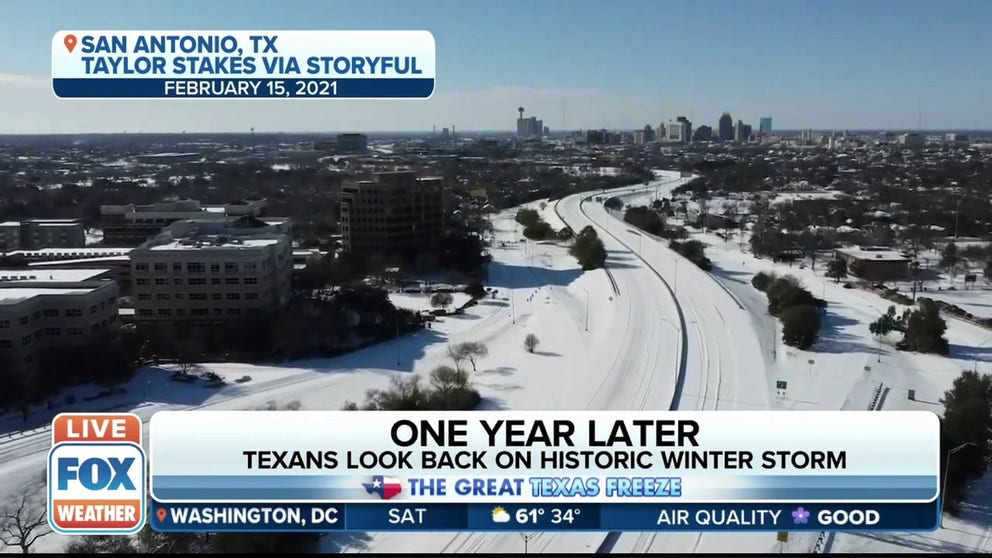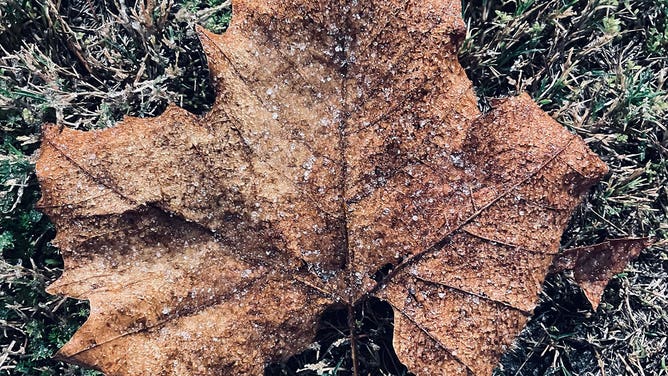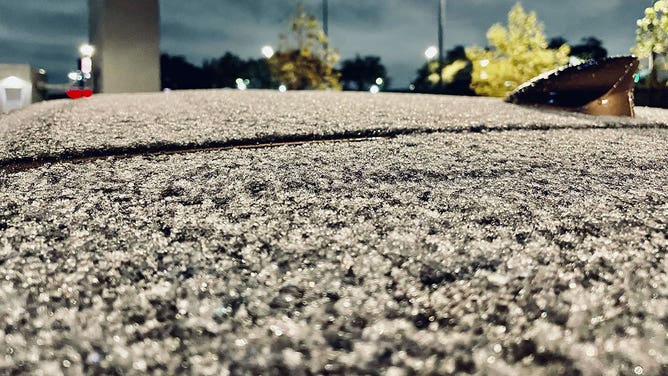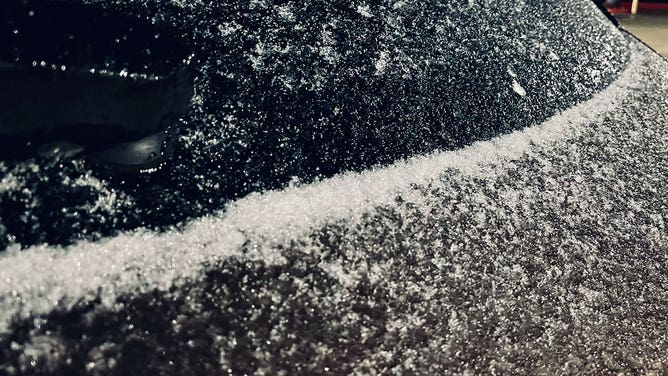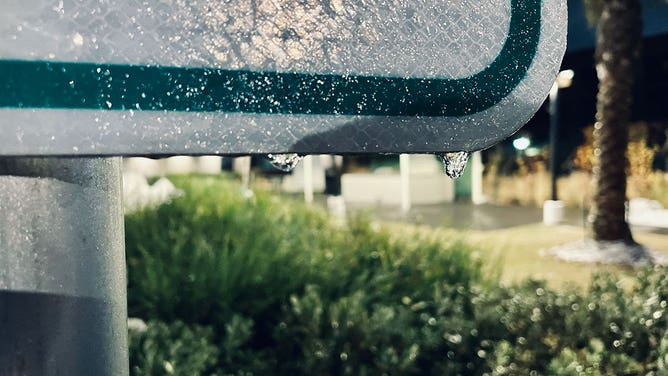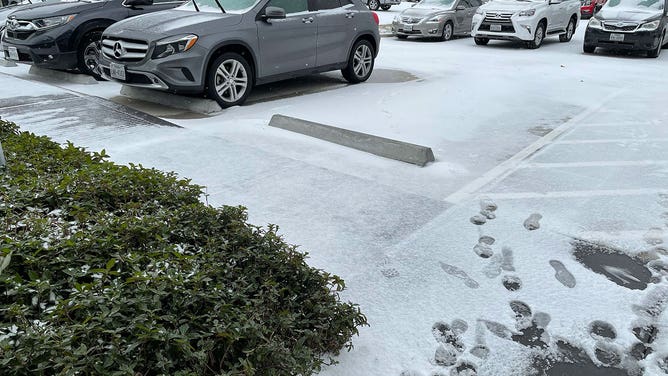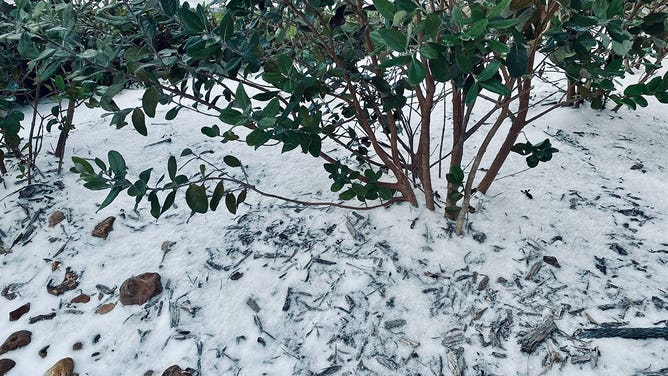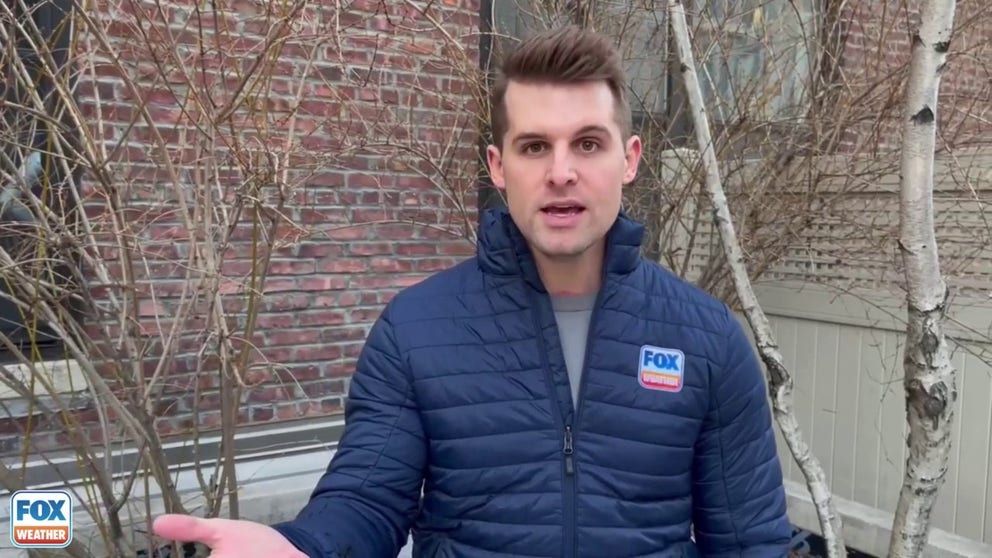What it was like to live and work in Houston during Texas’ crippling 2021 winter storm
The storm produced not only wintry weather but also days of freezing temps that left millions of people without power or water for days
One year later: Texans look back on historic winter storm
This weekend marks the anniversary of the 2021 Great Texas Freeze. The costliest U.S. winter storm event on record unfolded a year ago leading up to Valentine's Day with an estimated $24 billion in damage. It left catastrophic power failures in Texas, spanning most of the state for four days with sustained below-freezing temperatures. FOX Weather Senior Digital Content Producer Aaron Barker has more from Houston, Texas.
As a meteorologist, I’m accustomed to watching a weather event unfold from afar by analyzing data, reading and writing articles and watching videos from the hard-hit epicenter of the storm.
When you live in that epicenter, it’s an entirely different thing.
Since I’ve moved to Houston in 2016, I’ve been in that position a couple of times – Hurricane Harvey in 2017 and the 2021 winter storm. The only similarity between the two events was their scope, affecting millions of people across Texas.
I’ve written about my experience during Hurricane Harvey on the anniversary of the storm last year. With the anniversary of the winter storm approaching, I thought I’d share my perspective of what it was like to once again be the site of a natural disaster.
It started out slow
I was working at a Houston TV station at the time, and I can distinctly remember the chief meteorologist sounding the alarm about the possibility of a winter storm nearly a week before it happened. He said snow, sleet and freezing rain would precede a significant arctic air mass.
I think we were less concerned about the cold, and more worried about the snow and ice that could make travel in the city a real problem. After all, Houston had seen very cold weather before, but it’s extremely rare that we see snow, or sleet for that matter, this far south in Texas.
The whole thing started about four days before Valentine’s Day as a front brought some big-time cold to Southeast Texas, but it was just the tip of the iceberg. The day before Valentine’s Day a second cold front entered the state, and with the cold air already in place, the icy weather started.
On Valentine’s Day, the second front ushered in even colder air into the Houston region. Wintry weather also accompanied the front, which started to make roads a bit slick. That was when I packed a bag and an air mattress and headed for the station. I was prepared to be sleeping in offices there for at least a couple of days.
By that night, I had written several stories about how road conditions were worsening and there had been some manageable power outages. Other than that, it was a routine night in a newsroom. I went to sleep in a corner office and was woken up a few hours later with the news that things had taken a drastic turn.
Blackouts and burst pipes
Power outages were spreading, and the state’s power grid agency was ordering major cutbacks on usage to compensate. This led to the issuance of rolling blackouts to help prevent an overload of the grid. Before long, we started hearing from people whose power had been cut for much longer than the interval we were told was being used for the blackouts. It was quickly becoming apparent that something was wrong with the power grid. Even colder temperatures were forecast, and we were becoming increasingly concerned about how people are going to stay warm without power.
By the next day, it was clear that this was a full-blown crisis. Pipes were bursting in people’s homes across the city. This led to a drastic drop in water pressure and calls from officials for those who had water to drastically reduce their usage. Power was still out for tens of thousands of people across Houston.
Vivid memories
Later, I got a call from my partner who said his family was still without power and temps inside their house were in the 40s. A colder night was expected, and they were worried about how they were going to stay warm. Our apartment, which is located across from a hospital, still had power, so they came to our place as the freezing weather continued. It would be a few days before the power came back on at their house.
While they were staying with us, we lost water. Luckily, we had some water bottles and bathtubs that we filled before the storm. That allowed us to drink, cook and flush toilets. Showers, however, were out of the question. I didn’t shower for three days while we waited for the water to return.
One of the most vivid memories I have is from one of the coldest mornings. Pipes that fed the fire sprinkler system burst in nearly every building in the complex. That led to building-wide fire alarms sounding. Thinking someone had left a candle burning or something being cooked got out of control, we scrambled to scoop up our dogs and cat and rush outside. Turns out, the sudden drop in water pressure prompted the alarms to sound. We were safe.
Those burst pipes spilled water into several apartments, including ours. Most of the carpet in our bedroom and closet was soaked before we noticed the problem. The carpet had to be ripped up and the lower third of the wall had to be cut away because of water damage. We weren’t alone. People across Houston were dealing with similar problems. Repair crews were in short supply, which means it took a long time to get that damage fixed.
Britta Merwin shares memories of Great Texas Freeze
FOX Weather meteorologist Britta Merwin shares her memories of working in Houston during the 2021 winter storm in Texas.
Stephen Morgan shares memories of Great Texas Freeze
FOX Weather meteorologist Stephen Morgan shares his memories of working as a meteorologist in Houston during the 2021 winter storm in Texas.
The toll
For me, one of the most surprising aspects of the storm was what I learned about how the Texas power grid is managed. Investigations found that there were failures on many levels, and those failures led to lives and livelihoods of millions of people being upended.
And let’s not forget – more than 200 people in Texas died during the storm, and some of them froze to death.
